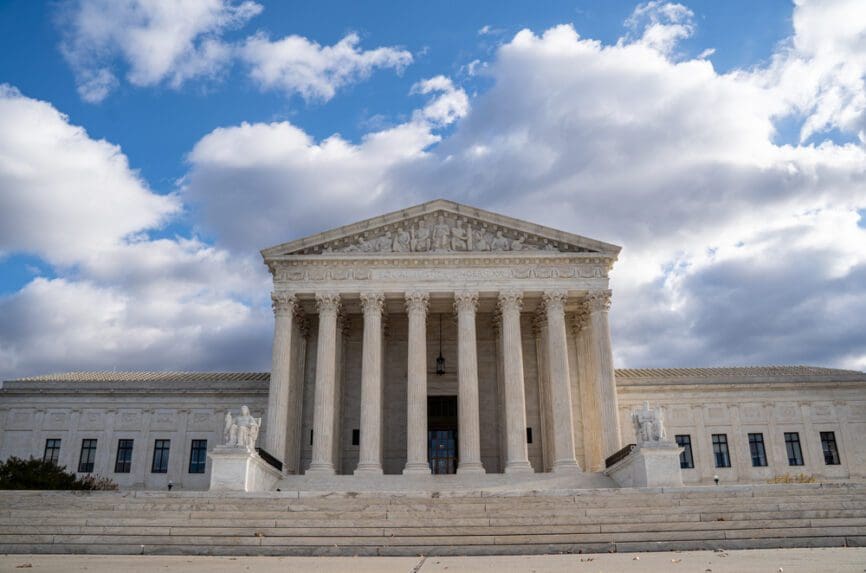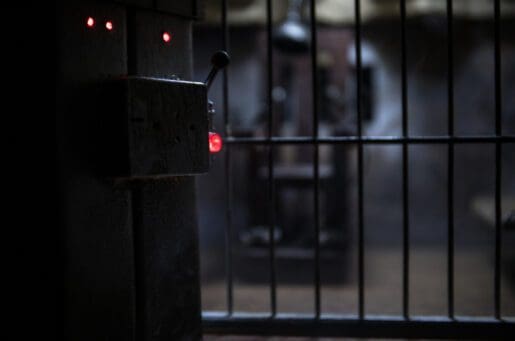Bioethics Forum Essay
Leaked Supreme Court Opinion, Structural Sexism, and Our Moral Imagination
The leaked draft of the Supreme Court’s majority opinion to overturn Roe v. Wade has sent shockwaves throughout the world.
Over the last decade, during which we came into adulthood, we have been troubled by how women’s bodies in the abortion debate have been repeatedly appropriated for political fodder and debate. With the release of the draft Supreme Court opinion, it felt as if a dam had finally broken, confirming many of our worst fears. The decision, if it is final, will cast a blow to reproductive freedom, restricting abortion through state-level legislation and making safe abortion far more difficult to obtain. Due to structural reasons, the effects will disproportionately hurt Black and Brown communities, as well as people with low incomes who don’t have the means to travel to a state where abortion remains legal.
Regardless of the legality of the decision, abortions will still occur, but in many states they will be much more dangerous, with many people resorting to life-threatening procedures. It is unclear the extent to which medical abortions—induced by mifepristone and misoprostol—will remain an option. Although arguments have been made that federal approval of the drugs should preempt state laws that limit access to them, to date a case has not been brought before the legal system.
While most attention is rightfully focused on the effects of legal abortion on safety, educational attainment, health, and income, less discussed is how abortion may influence women’s self-esteem and perception of our abilities—to control our decisions, imagine our future, and plan our livelihoods. The psychosocial effects should not be underestimated. If the Supreme Court opinion remains, millions of children and young adults will mature in a country where it is normal for state governments to surveil and criminalize the decision to access abortion.
Patricia Homann, a sociologist from Florida State University, has proposed and studied the concept of structural sexism, developed in parallel to structural racism. She notes that much like structural racism, structural sexism occurs when policies, laws, and other organizational structures create a sociopolitical model that sustains, reifies, and encourages sexist behavior and attitudes. Furthermore, Homann notes that an important component of structural sexism is that the attitudes expressed by the laws may eventually become internalized. This internalization is crucial, especially when thinking about how power structures influence and minoritize individuals and groups. In this way, the law may cause expressive harm by signaling that harboring negative attitudes towards women’s equal standing in society is acceptable. How might we be affected by a decision that says a person’s right to their bodily autonomy is not constitutionally protected?
The constitutional right to abortion is important legally, of course. However, it is well documented that passage of policies and laws have the ability to sway attitudes, changing perceptions of what is normal and acceptable. For example, after same-sex marriage was legalized by the Supreme Court in 2015, public opinion of same sex-couples became more favorable.
Rhetorically, a constitutional right to abortion does not only communicate that it is important that abortion remain a legally protected option; it is a codified expression that one is regarded as an equal member in society, with the law expressing that the appropriate attitude to hold towards women is one of respect for her bodily autonomy and decision-making. As the late Justice Ruth Bader Ginsburg stated, “The decision whether or not to bear a child is central to a woman’s life, to her well-being and dignity. . . . When government controls that decision for her, she is being treated as less than a fully adult human responsible for her own choices.”
Laws that seek to restrict abortion do not merely infringe on autonomy; they infantilize people who are perfectly capable of making decisions for themselves. The potential internalization of these policy decisions warrants further inspection from researchers and advocacy groups to fully determine the scope that such decisions have on individuals’ self-esteem and self-perception.
While the near future looks bleak for abortion rights, it is imperative that we use this time to thoughtfully understand how we can move forward. Some policy solutions may help protect the right across our country. For example, Connecticut recently passed a bill (HB 5414) that would allow the state to act as a safe haven by legally protecting women who travel from other states to receive abortion care and physicians who provide this care. Passage of similar legislation in other states bordering jurisdictions that may soon criminalize abortion would guarantee more widespread and protected access to abortion care.
While continuing to consider policy avenues, ethics will be of indispensable help. Through our training in ethics, we have learned that a specific kind of imagination is required to do ethics. It is the imagination to see the world for what it is, examine it, and then envision other realities that are more ideal, equitable, and just. It is our hope that our moral imagination does not cease in this time when it is perhaps clearer than ever that Roe will be dismantled. Instead, we hope we are able to continue to envision a better world and to create pathways to ensure that abortion access for all comes to fruition.
For us to imagine a future in which access to abortion is codified through law and policy without constant polarization and precarity, ethicists, policymakers, advocates, and community members must continue to empower people to imagine that such a world is possible—and that we are deserving of it.
Danielle Pacia, MBE, (@DaniellePacia) is a senior project manager and research assistant at The Hastings Center. Beatrice L. Brown, MBE, (@Beatrice__Brown) is a research specialist at the Program On Regulation, Therapeutics, And Law (PORTAL) at Brigham and Women’s Hospital and is an incoming student at Yale Law School.













What this perspective misses is that tens of millions of women don’t agree that abortion restrictions are structural or any other kind of sexism. The polling numbers around abortion have been pretty steady for decades and there’s not much (but usually some) difference between men and women depending on the question being asked. So what’s needed is not policymakers and advocates having ethical imagination but the hard political work of persuading women and men in states like Texas to agree with you. The GOP has been clear for years- since Reagan- that it wants to roll back abortion access, and even if we account for gerrymandering and the structural inequality of the Senate and Electoral College, it’s still true that about half of party-identified voters vote for the anti-abortion party.
Reducing abortion politics to sexism abolishes the agency of women who have opinions vastly different than yours, and that’s a big chunk of the electorate. Go read the Pew and Gallup polling on this issue and figure out how to persuade the voters who don’t currently agree with you. That’s hard but there’s no other way.